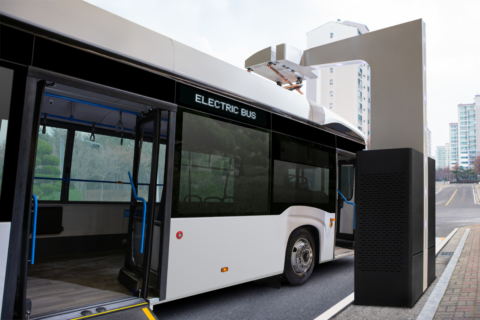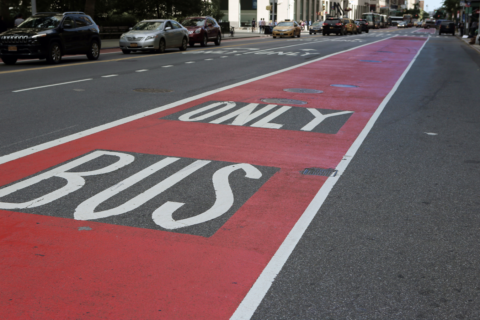Cities, towns and villages across the United States took bold actions to address the COVID-19 pandemic, initiating thousands of policies aimed at improving public health, city operations, infrastructure, housing and workforce development. These actions reflect the innovative potential demonstrated by local governments nationwide.
Governments are often compelled to innovate out of necessity. Restraints, like limited budgets and staffing, or the challenge of taking on novel and complex issues, motivate governments to think creatively about how to propel their operations beyond the status quo. However, many local leaders are demonstrating that innovation is also a critical investment to prepare for disruptive events and uncertainties. While all governments innovate, there are key ways innovation can become more than a series of add-on tools and products; innovation can become an integral part of core operations.
Understanding Innovative Capacity
Many local leaders have proactively embedded innovation into their organizational routines to promote more dynamic, inventive and nimble governance. They’ve fostered collaboration between departments, harnessed data to inform decision-making and embraced approaches that prioritize equity and the needs of residents.
These habits have an impact on an organization’s innovative capacity, which refers to the holistic ability of an organization to systemically foster a culture of innovation, develop requisite skills and competencies and encourage experimentation and collaboration. Innovative capacity encompasses the organization’s readiness and capability to generate, implement and sustain innovative solutions in response to both expected and unexpected challenges. Additionally, innovative capacity equips local governments to navigate uncertainties, pivot swiftly when necessary and continuously improve and modernize government services and operations, all of which are crucial when local governments find themselves standing head-to-head with unprecedented challenges.
National League of Cities’ Urban Innovation team is exploring how innovative capacity is activated and leveraged during times of crisis. We’ve spoken with a dozen local leaders from across the country to learn about what impacts innovative capacity and how that capacity affects a city’s ability to respond to crisis. We’ve examined these relationships mainly through the lens of the COVID-19 pandemic, looking at the near past to draw lessons for the future as cities consider how to build resilience to prepare for what’s next.
Innovation During Crisis
Our research offers a glimpse into how cities operationalize various assets, such as innovation teams, robust data capacity, partnerships with the private sector and universities, monitoring and evaluation systems and policies that embrace experimentation and risk-taking. These assets play a crucial role in meeting the needs of emergency city operations, including communication, resource distribution, collaboration and long-term recovery.
Cities leveraged their innovative capacity to improve internal and external communication. This helped disseminate vital information within the government and transparently share it with the public and stakeholders through digital tools and platforms.
- For example, the Department of Innovation in Baltimore, MD, emerged as a key player at the onset of the COVID-19 pandemic. They collaborated with the Health Department to launch creative awareness campaigns aimed at encouraging vaccine uptake.
- The innovation team in Glendale, CA, used their expertise to establish an internal dashboard tracking infection rates among the region’s firefighting personnel. This empowered the organization to proactively monitor and address potential health risks to ensure firefighters’ well-being and better managing emergency response capabilities in the region.
Innovative capacity played a critical role in efficiently managing public services during COVID-19, employing data-driven decision making to manage resources effectively.
- In Detroit, MI, the city swiftly expanded its data teams to manage the influx of American Rescue Plan dollars, enabling the city to navigate complex funding requirements, prioritize key initiatives and ultimately foster a more resilient and responsive community data infrastructure.
- In Burlington, VT, the IT infrastructure faced challenges when staff transitioned to remote work during lockdown. The innovation team’s technological focus supported the city’s software needs and improved remote capabilities. This improved the organization’s adaptability while allowing for the continuity of service delivery.
Partnerships and community engagement practices allowed cities to better understand new priorities, co-create solutions and respond to emerging challenges through coordinated efforts.
- Bend, OR, faced a sudden need for a comprehensive remote-work policy in 2022. The city’s innovation team leveraged cross-departmental relationships and its expertise in design thinking to generate citywide working groups. They created 45 recommendations for the city’s Future of Work plan.
- As the rate of unhoused persons doubled in Grand Rapids, MI during the pandemic, the city’s partnership with Public Agency within the West Michigan Center for Arts and Technology emerged as a vital collaboration. This partnership facilitated the exploration of innovative solutions and played a crucial role in expanding the team’s capacity to address the growing challenges associated with homelessness, demonstrating a proactive and community-focused approach during a time of heightened need.
In anticipation of future crises, some cities are doubling down on innovation for long-term planning and strategic foresight.
- In Commerce City, CO, the pandemic underscored the benefits of modernizing city operations. In 2022, the Council authorized the creation of the innovation and performance center, which serves continuous improvement and added support for data use and innovation throughout City Hall.
- After the pandemic, the i-team in Bloomington, IN has been charged with crafting a comprehensive plan that will shape the community’s pathway toward resilience and sustainability in anticipation of future challenges, particularly climate-related emergencies.
Join the Research and Dialogue
Does your city have an innovation story to share? NLC invites local leaders to share how they leveraged prior innovation investments, such as data capacity and cross-departmental collaboration, to address the multifaceted challenges posed by COVID-19 and other matters such as the opioid crisis, severe weather events and the loneliness epidemic. We aim to foster an ongoing dialogue on how local governments are creating innovation routines to effectively respond to emerging and urgent needs.







